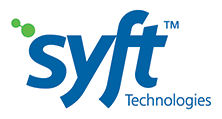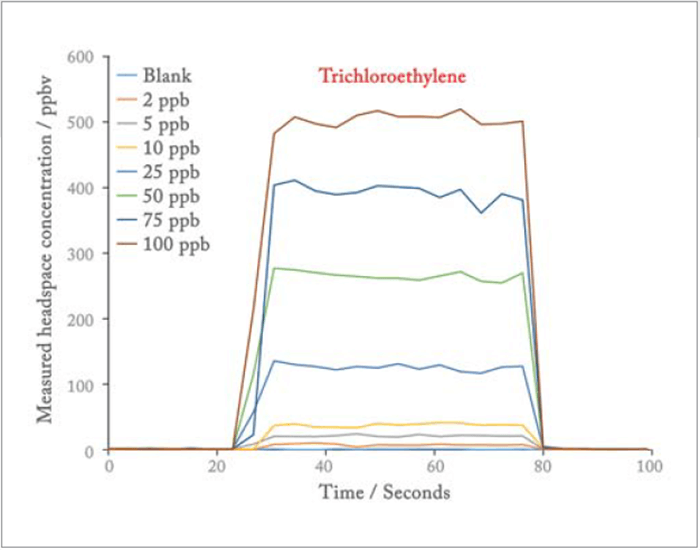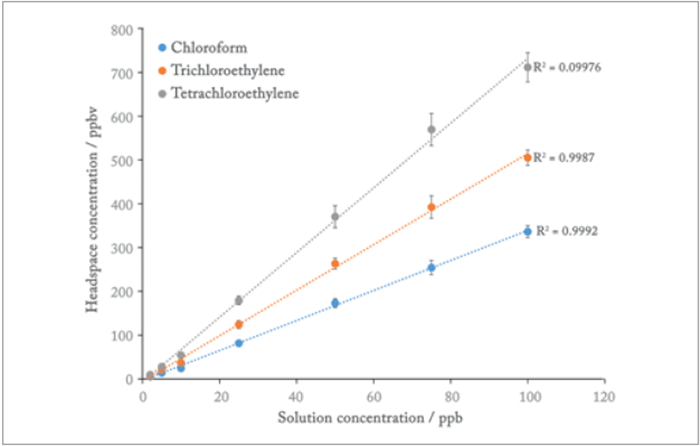Organochlorine compounds such as chloroform, trichloroethylene (TCE), and tetrachloroethylene (perchloroethylene, PCE) found widespread use in diverse industries in the 20th century. Although usage is now greatly reduced, these compounds continue to be significant contaminants in air, soil, and water. The purge and trap approach is most commonly applied for analysis of these species in water, followed by gas chromatography analysis coupled with either electron capture detection (GC-ECD) or mass spectrometry (GC-MS). Not only are these methods slow, the GC requires moisture to be removed. Application of SIFT-MS can accelerate analysis through direct headspace analysis as the need to purge, trap, and dry are all eliminated.
Standards containing chloroform, trichloroethylene, and tetrachloroethylene were prepared from a 1,000-ppm solution in methanol. From this stock solution, 10 µL was transferred into 10 mL of water to make a 1-ppm standard solution. The solutions for linearity and repeatability measurements were prepared by taking 20 µL, 50 µL, 100 µL, 250 µL, 500 µL, 750 µL and 1,000 µL aliquots and filling them to a total of 10 mL in water in 20-mL headspace vials. This yielded solutions ranging in concentration from 2 to 100 ppb.

Please log in or register to view the full application note







